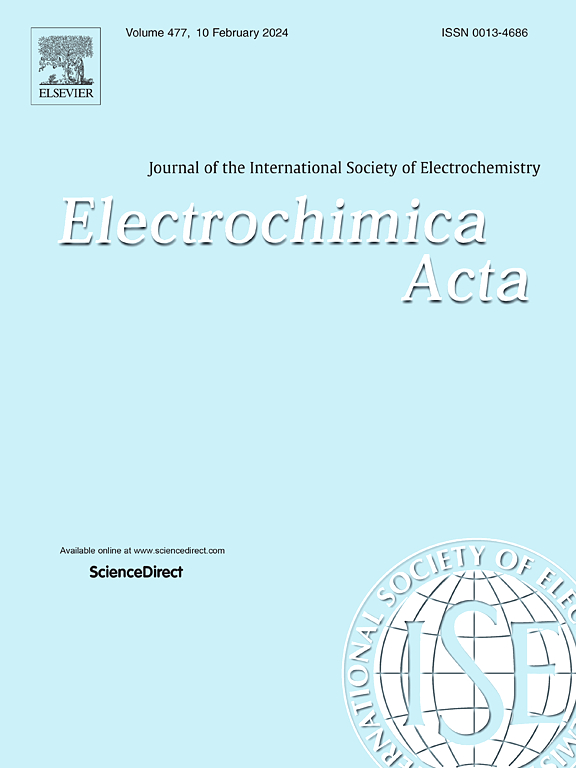基于pvdf - hfp的复合保护层增强锂金属电池的稳定性和枝晶抑制
IF 5.6
3区 材料科学
Q1 ELECTROCHEMISTRY
引用次数: 0
摘要
锂金属电池(lmb)的进步对于下一代高能存储系统,特别是电动汽车至关重要。然而,它们的实际实施受到不受控制的锂枝晶生长的阻碍,导致容量下降和循环稳定性差。本研究引入了一种由聚偏氟乙烯-共六氟丙烯(PVDF-HFP)和二氧化硅颗粒组成的复合保护层(CPL)来解决这些挑战。CPL有效抑制枝晶形成,稳定固-电解质界面,提高循环稳定性和电化学性能。优化后的CPL在4.7 V电位窗口内具有优异的电化学稳定性,锂离子转移数高达0.37。对称的cpl包覆锂电池在电流密度为2 mA cm⁻²的400次循环中表现出稳定的镀剥离行为,固定的面积容量为2 mAh cm⁻²。在NCM622阴极的全电池结构中,cpl包覆的锂阳极在450次循环中保持了3.08 mAh cm⁻²的可逆面积容量,在0.5C/1.0C充放电速率下实现了90.9%的容量保持率和99.77%的平均库仑效率。这种有机-无机混合策略为缓解锂金属阳极的关键挑战、延长电池寿命和提高高能存储应用的安全性提供了一种有前途的方法。本文章由计算机程序翻译,如有差异,请以英文原文为准。


Enhanced stability and dendrite suppression in lithium metal batteries via PVDF–HFP-based composite protective layers
The advancement of lithium metal batteries (LMBs) is crucial for next-generation high-energy storage systems, particularly for electric vehicles. However, their practical implementation is hindered by uncontrolled lithium dendrite growth, leading to capacity degradation and poor cycling stability. This study introduces a composite protective layer (CPL) composed of poly(vinylidene fluoride-co-hexafluoropropylene) (PVDF-HFP) and SiO₂ particles to address these challenges. The CPL effectively suppresses dendrite formation and stabilizes the solid-electrolyte interphase, enhancing cycling stability and electrochemical performance. The optimized CPL exhibits excellent electrochemical stability within a 4.7 V potential window and a high lithium-ion transference number of 0.37. Symmetric CPL-coated lithium cells demonstrate stable plating-stripping behavior over 400 cycles at a current density of 2 mA cm⁻² with a fixed areal capacity of 2 mAh cm⁻². In a full-cell configuration with an NCM622 cathode, the CPL-coated lithium anode retains a reversible areal capacity of 3.08 mAh cm⁻² over 450 cycles, achieving 90.9 % capacity retention and an average coulombic efficiency of 99.77 % at a 0.5C/1.0C charge-discharge rate. This organic-inorganic hybrid strategy provides a promising approach to mitigating key challenges of lithium metal anodes, extending battery lifespan, and enhancing safety for high-energy storage applications.
求助全文
通过发布文献求助,成功后即可免费获取论文全文。
去求助
来源期刊

Electrochimica Acta
工程技术-电化学
CiteScore
11.30
自引率
6.10%
发文量
1634
审稿时长
41 days
期刊介绍:
Electrochimica Acta is an international journal. It is intended for the publication of both original work and reviews in the field of electrochemistry. Electrochemistry should be interpreted to mean any of the research fields covered by the Divisions of the International Society of Electrochemistry listed below, as well as emerging scientific domains covered by ISE New Topics Committee.
 求助内容:
求助内容: 应助结果提醒方式:
应助结果提醒方式:


